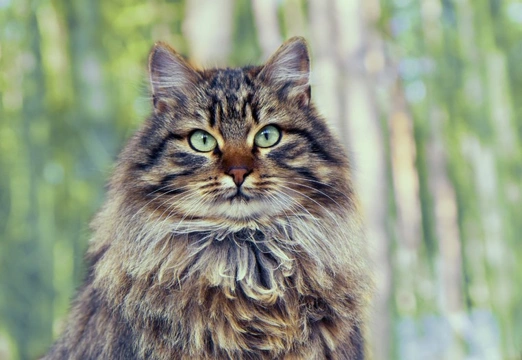
10 things you need to know about the Siberian cat before you buy one
The Siberian cat is one that perhaps isn’t a hugely common sight in the UK, but nonetheless one that has a strong following of fans and enthusiasts that appreciate the breed’s lovely personality and very distinctive good looks.
Siberian cats are fairly large and they have thick, plush coats that make them look even larger, so if you do see one you tend to remember them for the long term! This means that every year, a lot of people meet their first Siberian cat and aspire to own one of their own, but they are not the right fit for everyone, and this is a breed that requires a lot of research before you commit to buying a Siberian cat of your own.
With this in mind, this article will tell you ten things you need to know about the Siberian cat to kick start your research, before you go out and buy a Siberian cat of your own. Read on to learn more.
1. The Siberian cat is a landrace breed
The Siberian cat breed is unlike most modern breeds, which were developed deliberately by people – the Siberian is a naturally occurring or landrace breed, which hails from Siberia in Russia, and which evolved in the region naturally and without the deliberate intervention of people.
The modern form and appearance of the Siberian cat is very similar to their historical norms, and they’ve not been subject to a lot of deliberate breed development.
2. The Siberian cat is thought to be the original ancestor of all modern longhaired cat breeds
The Siberian cat breed is also very notable because they’re thought to be one of the most ancient breeds of all, and the ancestor of all of the longhaired cat breeds that we know and recognise today, including the Persian, which is the breed that most people think of as the original longhaired cat!
3. Siberian cats are recognised by the GCCF
As you might expect, the Siberian cat breed is afforded pedigree status in the UK by the GCCF, or Governing Council of the Cat Fancy. This means that registered cats can be entered in the breed’s stud book, and are eligible to be entered into cat shows.
4. The Siberian cat has a unique semi-longhaired coat
The Siberian cat is actually semi-longhaired rather than fully longhaired, and their coat has evolved in the way it has due to their origins in the harsh climate of Siberia. There are three distinct layers to the Siberian cat’s coat, comprised of down, awn hair and guard hair. This helps to keep cats of the breed warm in even the most inhospitable of winters, but can mean that they get rather too hot in summer!
5. They produce less allergenic dander than most other cat breeds
Another interesting and unique trait of the Siberian cat’s coat is that some cats of the breed produce a lot less of a specific protein carried in cat dander that tends to be a common allergenic trigger for people sensitive to them. Cats of the breed are sometimes mistakenly referred to, or advertised as, hypoallergenic as a result of this.
However, there is no such thing as a hypoallergenic cat, and even amongst Siberian cats within a study that were tested for allergenic protein levels, only 50% were found to have levels lower than other cat breeds, and only 20% had very low levels.
6. Siberian cats are reasonably large and quite rangy
The Siberian cat is medium to large in size, and they tend to be fairly long and tall with a balanced conformation that is neither overly lean nor stocky. Their thick, plush fur also makes them look a lot larger too in many cases!
7. Siberian cats are very agile and tend to be physically active
The Siberian cat is a fairly active one that is relatively physically active compared to most, and they are also notable for being very agile jumpers and climbers, who are generally adept at getting up and down trees and into high places!
8. Siberian cats aren’t usually a good pick to keep indoors only
Because the Siberian cat is inquisitive, playful, often a keen hunter, and generally more physically active as a whole than most other cat breeds, they are not usually the best choice of breed to keep as an indoor only pet without access to the outside world.
However, cats raised as indoor-only pets from an early age will usually adapt perfectly well, particularly if provided with secure access to an outdoor run or pen.
9. Siberians tend to be fairly long-lived, but there is some inbreeding within the breed
The Siberian breed in its natural state is relatively long lived, and has an average lifespan of around 12-15 years, and cats of the breed tend to be reasonably robust and hardy.
However, the breed population of Siberian cats in the UK is not particularly large and so is subject to a reasonable amount of inbreeding, which can result in the spread of hereditary health issues within certain breed lines.
10. Siberian cats need a lot of brushing and grooming
The Siberian cat’s coat is relatively high maintenance, and they shed fur year-round including twice a year in a marked seasonal shed. Siberian cats need daily brushing and grooming to keep their coats in good condition and to prevent their fur from becoming knotted and matted, and to reduce the chances of the cat developing hairballs.



